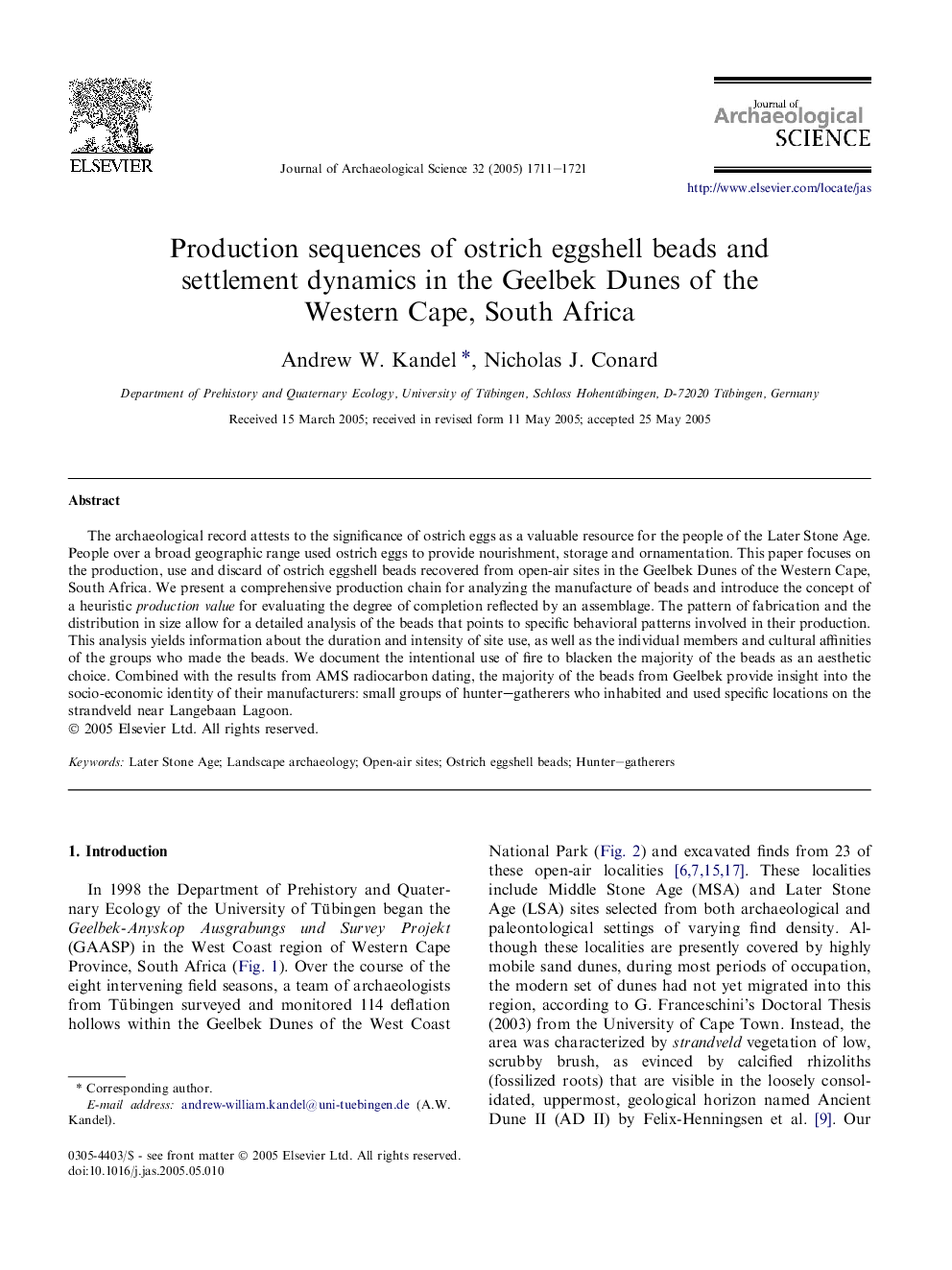| Article ID | Journal | Published Year | Pages | File Type |
|---|---|---|---|---|
| 10499356 | Journal of Archaeological Science | 2005 | 11 Pages |
Abstract
The archaeological record attests to the significance of ostrich eggs as a valuable resource for the people of the Later Stone Age. People over a broad geographic range used ostrich eggs to provide nourishment, storage and ornamentation. This paper focuses on the production, use and discard of ostrich eggshell beads recovered from open-air sites in the Geelbek Dunes of the Western Cape, South Africa. We present a comprehensive production chain for analyzing the manufacture of beads and introduce the concept of a heuristic production value for evaluating the degree of completion reflected by an assemblage. The pattern of fabrication and the distribution in size allow for a detailed analysis of the beads that points to specific behavioral patterns involved in their production. This analysis yields information about the duration and intensity of site use, as well as the individual members and cultural affinities of the groups who made the beads. We document the intentional use of fire to blacken the majority of the beads as an aesthetic choice. Combined with the results from AMS radiocarbon dating, the majority of the beads from Geelbek provide insight into the socio-economic identity of their manufacturers: small groups of hunter-gatherers who inhabited and used specific locations on the strandveld near Langebaan Lagoon.
Related Topics
Physical Sciences and Engineering
Materials Science
Materials Science (General)
Authors
Andrew W. Kandel, Nicholas J. Conard,
